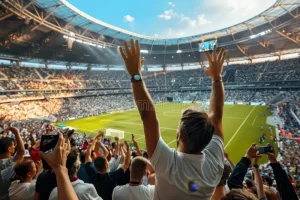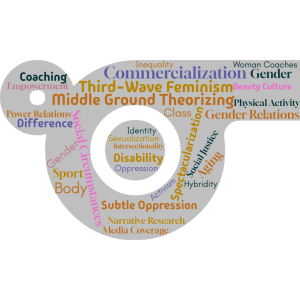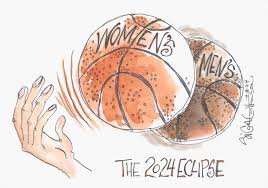1
Section One: The Fundamentals
A) What do we know about sport? What are common assumptions we make about sport and society?
Sports Build Character
While sports are frequently praised for instilling values such as discipline, perseverance, and teamwork, this may not be the case for everyone, particularly from certain perspectives. For some people, particularly those from marginalized communities or who have faced discrimination, the competitive nature of sports can exacerbate feelings of exclusion or failure.
In these situations, sports may not strengthen character but rather reinforce social divides. Lower-income athletes, for example, may face systemic barriers to entry, such as limited access to training resources, whereas those with more privilege may be able to use sport as a springboard to greater opportunities. Instead of building resilience, this disparity can cause frustration and a sense of injustice.
Furthermore, the intense focus on winning and competition in many sports may not always lead to positive character development. It can promote unhealthy forms of competition, such as putting success ahead of mental health, which can lead to burnout, injuries, or a devaluation of qualities like empathy and cooperation.
So, while sport can help some people develop their character, it may also reflect or amplify existing inequalities and pressures that impede personal growth.
Exercise 3: Notebook prompt
What are some other metanarratives about sport that you are familiar with? Find an image or video clip or draw something yourself that captures this idea…
So what? Why does any of this matter? Does it matter? As something we grow up with – live with – play through – we don’t often interrogate the meanings of sport, and perhaps we don’t want to.
But being aware of these assumptions and metanarratives is especially important, I would argue, because of the centrality of sport to our everyday lives, the role that sport plays in shaping our childhood and worldviews and….. [finish that thought]

Another sports-related metanarrative that comes to mind is “Escapism and Release.” For many people, sports provide a temporary escape from the stresses of everyday life, allowing them to forget about personal problems or societal pressures. The energy of a live event, or even simply watching a game, can provide a brief but meaningful respite, allowing fans or participants to immerse themselves in the drama, excitement, and passion of the game. Sport has a profound impact on our childhood and worldviews because it shapes the lens through which we see effort, success, failure, competition, and cooperation. Sport is more than just an isolated activity; it is embedded in the fabric of how societies define value, identity, and belonging. It can shape our expectations of what is achievable or desirable, as well as our perceptions of other social institutions such as education, work, and even politics.
|
B) What is social justice?
Exercise 4: Padlet Prompt
Think back to the last section and try to look at some of the ideas we discussed differently. How might sport and social justice actually co-exist?
Record any images, video clips, or gifs you added to the padlet and identify a point of intersection between sport and social justice (can be an issue or a barrier or a debate or something you would like to explore in more depth in this course) . Screenshot or paste in your response below.
| Access and opportunity: socioeconomic status, geography, and systemic inequalities all have a significant impact on athletic participation. Many communities lack affordable sports programs, adequate facilities, or access to coaching and equipment, posing challenges for marginalized populations. Gender, race, and ability all contribute to these disparities. Efforts to level the playing field include community grants, nonprofit organizations, and government subsidies, but they are frequently underfunded or limited in scope.
Equity and Representation: representation in sports reflects broader social trends. Women, athletes of colour, LGBTQ+ athletes, and people with disabilities frequently face discrimination, unequal pay, and limited visibility in sports. Efforts to promote equity include increasing media coverage, advocating for equal pay, and creating more inclusive spaces for athletes. However, systemic biases within leagues, governing bodies, and fan cultures continue to cause problems. Advocacy and Activism: Athletes are increasingly using their platforms to advocate for social justice issues, including racial inequality, climate change, and gender discrimination. Colin Kaepernick’s protests, the WNBA’s activism, and campaigns for climate-conscious sports practices all highlight athletes’ ability to serve as change agents. But these acts frequently draw criticism from organizations, supporters, and sponsors, which begs the question of how to strike a balance between activism and work commitments. Community Engagement: Sports have the ability to unite communities, promoting social cohesiveness and establishing secure environments for communication and cooperation. Cross-cultural and socioeconomic ties are strengthened by programs like mentorship programs, charity matches, and youth leagues. However, some groups may find their participation limited by structural inequalities, such as funding disparities and accessibility issues. The unifying potential of sports can be increased by growing community-based sports programs and emphasizing inclusivity. Health and Wellbeing: With advantages including increased fitness, stress relief, and social connections, sports play a significant role in both mental and physical health. However, not everyone has the same access to these benefits. People in underserved areas or with disabilities may face challenges such as unsafe environments, a lack of adaptive sports programs, or insufficient healthcare support for injuries. Prioritizing safe and inclusive access to sports is necessary to address these disparities. Education and Empowerment: Sports can be an effective way to teach life lessons like perseverance, teamwork, and leadership. Initiatives that combine education and athletics foster resilience in young people. However, these opportunities are restricted by inequalities in school athletic funding, especially in low-income areas. Concerns regarding sustainability are also raised by the effects of sports on the environment, including waste at major events and carbon emissions from transportation. Eco-friendly sports facilities and integrating environmental education into athletic programs are two initiatives aimed at resolving these issues. |
C) Social Justice Reading
(note: this activity is optional!)
D) KINESIOLOGY AND SOCIAL JUSTICE
Exercise 5:
Exercise 6:
What are the implications of bodies-at-risk discourse and the refusal to understand the health gap from a social justice perspective, according to the authors of this article?
According to the article, the bodies-at-risk discourse and refusal to understand the health gap from a social justice perspective have serious consequences. The implications include:
In conclusion, the authors argue that this viewpoint limits the potential for meaningful, inclusive, and equitable health and fitness solutions, and that a social justice approach is required to fully address the health disparities faced by marginalized populations. |
Section Two: Sport Feminism
Exercise 7: Notebook Prompt
What is feminism? What does it mean to you? Choose one of the images below and explain how it captures your understanding of feminism (or find one that does speak to you and paste this into your pressbook with an explanation of why it matters to you.
| In my opinion, feminism is about fighting for justice, equality, and social change in order to end the structural oppression of women and other marginalized genders. In order to guarantee that everyone has equal opportunities and rights, it is important to acknowledge and address the ways that gender intersects with race, class, sexual orientation, and ability. The We Can Do It! poster reflects this understanding of feminism. It is iconic for its depiction of female empowerment, especially in a historical context where women were taking on roles traditionally held by men during WWII. The image conveys strength, resilience, and women’s ability to overcome societal constraints. It represents women’s agency in the workplace and in the broader movement for social change. This image speaks to me because it exemplifies how feminism is about both individual empowerment and collective action. It challenges norms and inspires us to believe in our ability to change the world, whether by advocating for workplace equality, political participation, or dismantling harmful gender stereotypes. |
Exercise 8: Notes Prompt (optional)
NB: Cornell notes is a great resource that teaches effective notetaking. Unfortunately, our system can’t save notes taken in the H5P app, so this is fully optional.
Exercise 9: Crossword Activity
Exercise 10: Padlet Prompt

|

| Yes, the landscape for women’s sports appears to be shifting, and there is an increasing sense of interest and enthusiasm. Athletes such as Angel Reese and Caitlin Clark are helping to accelerate this shift by drawing attention to women’s sports. Their media presence and performance are challenging the previous invisibility of women’s sports, particularly in high-profile events such as NCAA basketball. While the media has historically favoured men’s sports, the success of these athletes is helping to change the narrative. The fact that their performances have sparked unprecedented enthusiasm indicates a shift in how people interact with women’s sports. We are seeing more coverage, conversations about equity, and sponsorship deals for women’s leagues and athletes. While things are improving, there is still much work to be done to achieve long-term, systemic change in how women’s sports are valued and covered, particularly in comparison to men’s sports. In many ways, this change is part of a larger movement advocating for gender equality in all aspects of society. So, yes, people care, but the challenge is to ensure that this attention is not fleeting, but rather grows and solidifies women’s presence and support in sports.
|

